The Everest Base Camp Trek is one of the most popular and best treks in Nepal.
Home to four of the six highest mountains in the world – Mt. Everest (8,848 meters), Mt. Lhotse (8,516 meters), Mt. Makalu (8,470 meters) and Cho Oyu (8,201 meters) – the Everest (or Khumbu) region affords trekkers the opportunity to hike in one of the grandest and most awe-inspiring trekking areas in the world.
Trekkers get to retrace the footsteps taken by Sir Edmund Hillary and Tenzing Norgay on their historic Everest expedition in 1953.
On this page, you will find a comprehensive and impartial guide to the Everest Base Camp Trek.
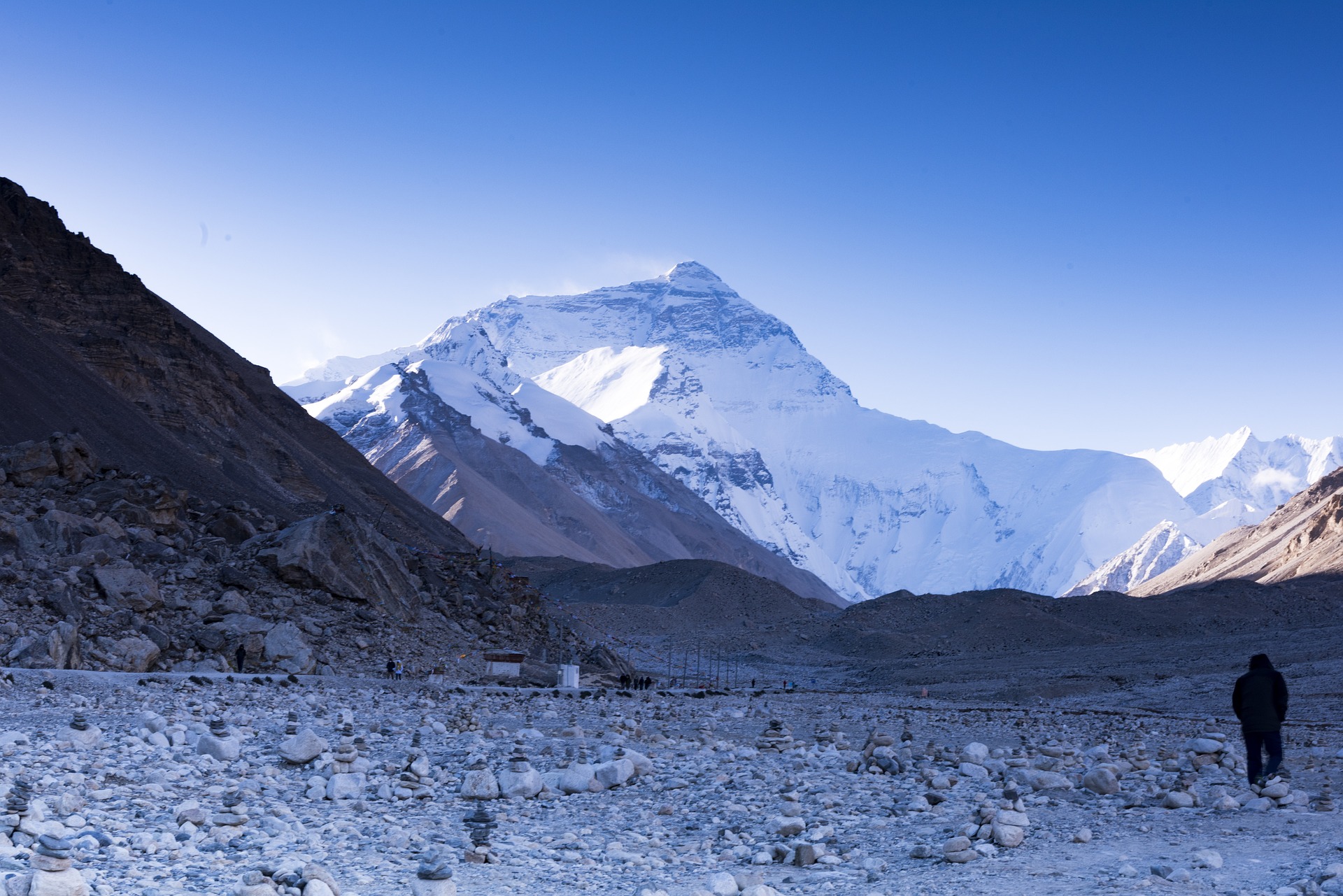
Everest Base Camp Trek
EBC Hike Overview
In this detailed Everest Base Camp trek article, you will find information on the typical route and its variations; a day-by-day itinerary breakdown of the trek; practical information on accommodation, meals, permits, equipment and insurance; as well as guidance on the best time to trek Everest Base Camp.
Key Highlights
Highlights on the trek include: unforgettable mountain views from Kala Patther, including Mt. Everest; the chance to see the famous Everest region Sherpas and Sherpa town – Namche Bazaar; sightseeing in the Sagarmatha National Park – a World Heritage Site; glimpses of the highest Buddhist monasteries in the world; and a sneak preview into the inner workings of the base camp to the world’s highest mountain.
Everest Regional Map
The Everest Base Camp trek is situated in the Everest, or Khumbu region of Nepal (see map below). It is the most popular trek in the region, if not the country.
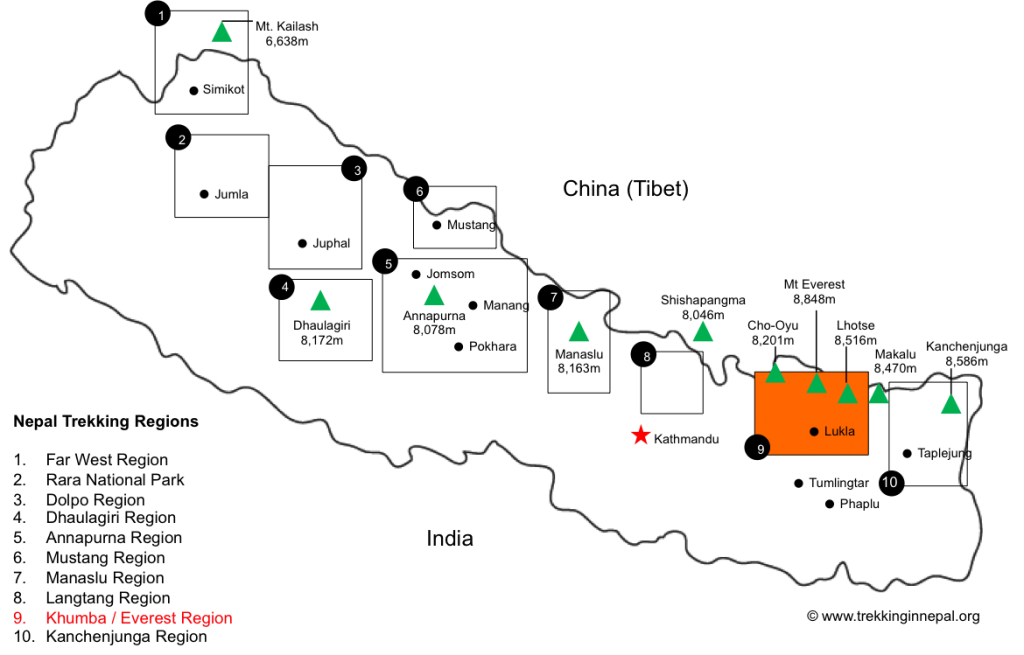
EBC Recommended Map
This map is one of the better representational schematics of the Everest Base Camp trail (we believe it is from GlobeTrekker but can’t be certain as there are many maps scattered across Google Images).
The map above shows the classic Everest Base Camp trek running up from Lukla to Namche Bazaar and then veering North-east up to Periche / Dingboche. From Dingboche / Periche the trail turns North-west to Lobuche before heading north gain to Gorak Shep. From here Everest Base Camp can be seen to the East and Kala Patthar in the North-west.
The map also shows the route to Island Peak in the East, via Dingboche and Chhukung, and the Gokyo Lakes in the West.
Please Note: The above recommended map is not to scale and should not be used as an accurate representation of the Everest Base Camp trek route. We provide links below to excellent maps of the Everest region.
EBC Trek Itinerary
Most trekkers fly from Kathmandu to Lukla Airport to begin their Everest Base Camp trek. The ‘classic’ or typical route follows straight up the Khumba Valley and through the Sagarmatha National Park to Everest Base Camp.
Variations via Gokyo Lakes or Chhukhung Valley are also popular (see the variations section below).
The typical Everest Base Camp trek duration is between 14-16 days (including transfers between Kathmandu and Lukla). The trek itself (excluding sightseeing in Kathmandu and transfers) usually lasts about 12 days with acclimatisation days at Namche Bazaar and Pheriche.
Here is a brief overview of a typical itinerary on an EBC trek, with approximate trekking times and altitudes.
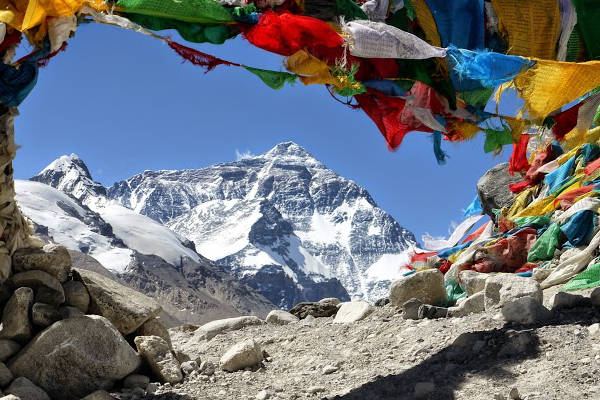
Day 1: Arrive Kathmandu
Arrive in Kathmandu. Rest and tour Kathmandu (often your tour operator will have pre-organised tours around Kathmandu).
See more in our guide on things to do in Kathmandu.
Day 2: Fly Kathmandu to Lukla. Trek to Phakding
Fly from Kathmandu to Lukla (expect a slightly scary landing at Lukla but rest assured the pilots are very experienced!). Weather can sometimes be a problem, so delays are common.
The flights afford great views of the Everest region, so have your camera ready. Try to sit on the right side of the plane to see Mt Everest. Upon arrival you will be transported to the trailhead and take a relatively easy trek from Lukla (2,800 meters) to Phakding (2,652 meters).

Namche Bazaar, Khumbu District
Day 3: Trek from Phakding to Namche Bazaar
Phakding (2,652 meters) to Namche Bazaar (3,440 meters) via Monjo (2,840 meters) and the beginning of Sagarmatha National Park. Weather permitting you might get your first glimpses of Mt Everest from the steep trail to Namche.
Day 4: Acclimatisation in Namche
This is usually a rest acclimatisation day in Namche (3,440 meters). If you are lucky enough to be in Namche on a Saturday, then make sure to visit the weekly market. Most operators will encourage you to take an acclimatisation trek to the Everest View Hotel (3,880 meters) where you can have lunch and capture views of Mt. Everest.
Day 5: Trek from Namche to Tengboche
Trek from Namche (3,440 meters) to Tengboche – also written Thyangboche (3,860 meters), home to the largest gompo (a Buddhist ecclesiastical fortification of learning). The trek is an undulating one which provides great views of beautiful mountains including Everest, Nuptse, Lhotse and Ama Dablam. Some treks go via Thame to visit the Thame Monastery, before continuing to Tengboche.
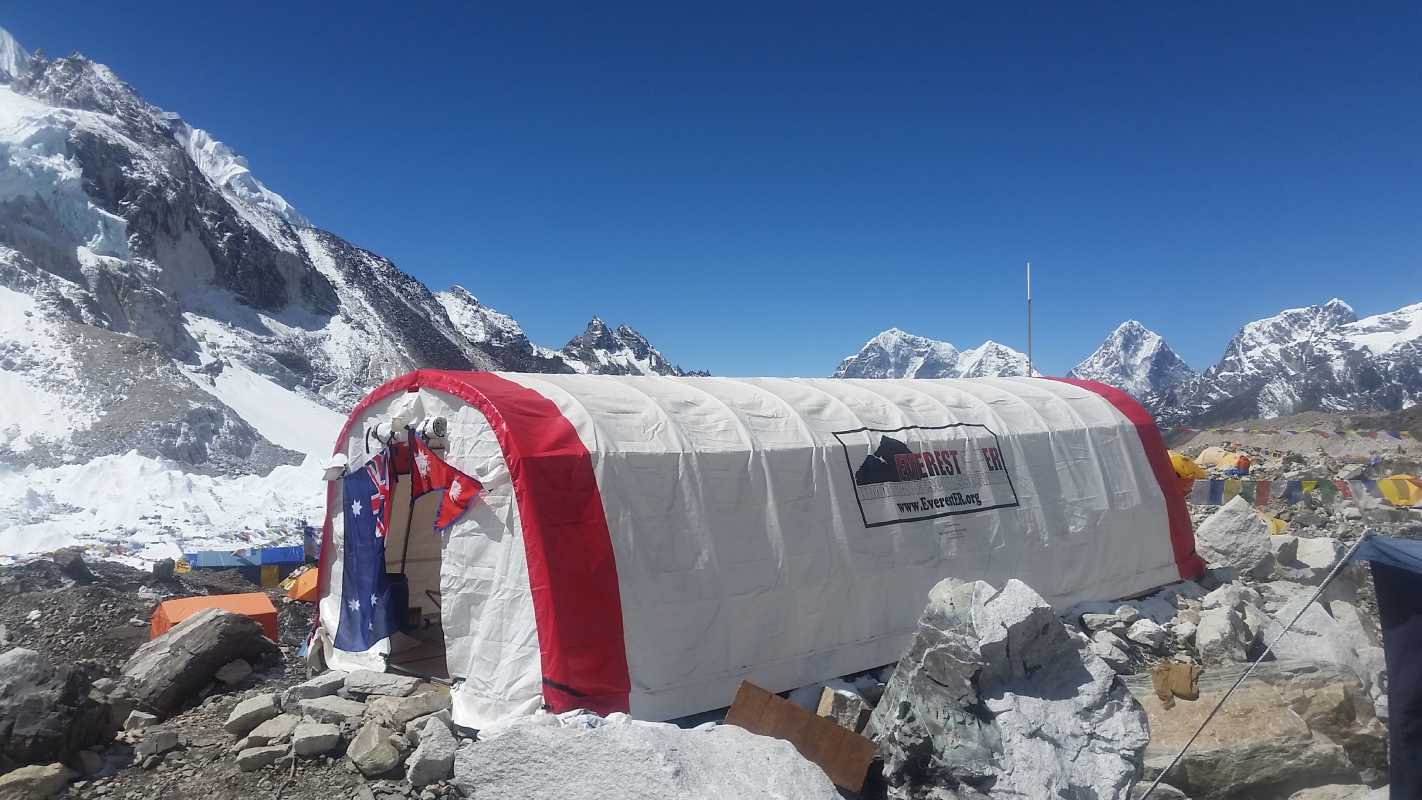
Day 6: Trek from Tengboche to Periche
Trek from Tengboche (3,860 meters) to Periche (4,280 meters) via the town of Pangboche. The Himalaya Rescue Association are based here, and it is well worth visiting them if your operator hasn’t already organised a tour.
Day 7: Acclimatisation day in Periche
Periche (4,280 meters) is usually used as the location for your second rest and acclimatisation day. Depending on your operator you will likely visit the Tshola Tsho Lake and then take a short trek towards Dingboche (4,360 meters) where you will get great views of the south face of Mt. Lhotse and Island Peak.
Day 8: Trek from Periche to Lobuche
A fairly long and steep trek from Periche (4,280 meters) to Lobuche (4,940 meters) via the Khumbu Glacier. You will see Sherpa Memorials built of stone cairns in remembrance to the many Sherpas and climbers that have died climbing Everest.
Day 9: Trek from Lobuche to Gorak Shep
Trek from Lobuche (4,940 meters) to Gorak Shep (5,170 meters) where you will have lunch and then onto Everest Base Camp (5,364 meters).
Most treks are not allowed to stay at Everest Base Camp without specific permission. The rules and regulations have changed around this issue over recent years, so it is worthwhile checking with your tour operator.
Visits to the icefall require mountaineering permits and are usually not part of a standard Everest Base Camp trek. After visiting Everest Base Camp you will return to Gorak Shep for the night.
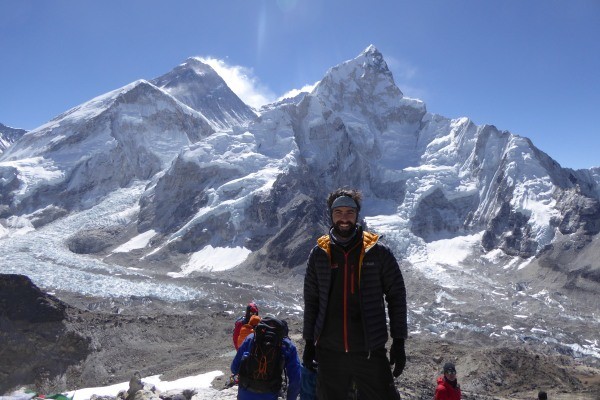
Kala Patthar
Day 10: Trek from Gorak Shep to Kala Patthar and EBC (Return to Dingboche)
A trek from Gorak Shep (5,170 meters) up the steep slopes to Kala Patthar (5,554 meters), a peak west of the Everest Base Camp which affords the best views of Mt. Everest, Nuptse Nup II and Changtse; as well as the northern flank and summit of Lhotse. You will leave Gorak Shep early to reach Kala Patther before the clouds roll in.
On a typical Everest Base Camp trek, Kala Patthar will be the highest altitude you will reach. It is also home to the worlds highest webcam – Mount Everest Webcam. From Kala Patthar, you then descend all the way back to Dingboche (4,360 meters).
Day 11: Trek from Dingboche to Namche
Trek from Dingboche (4,360 meters) to Namche (3,440 meters) via the rhododendron forests around Tengboche.
Day 12: Trek from Namche to Lukla
Trek from Namche (3,440 meters) all the way back to Lukla (2,800 meters) – a long and tiring walk to finish what is an incredible Himalaya trek.
Day 13: Fly from Lukla to Kathmandu
Fly from Lukla to Kathmandu.
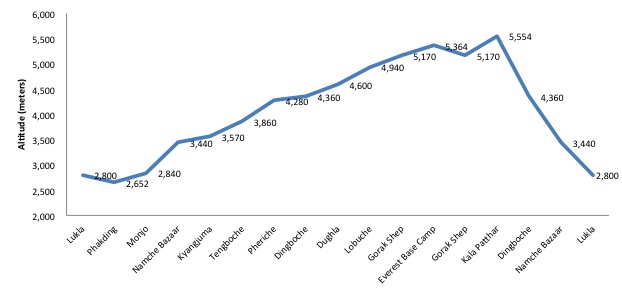
EBC Route Altitude Profile
Above is an altitude profile chart for a typical Everest Base Camp hike. The highest peak is Kala Patthar, at a staggering altitude of 5,554m.
Everest Route Variations
Below are typical route variations for the Everest BC hike.
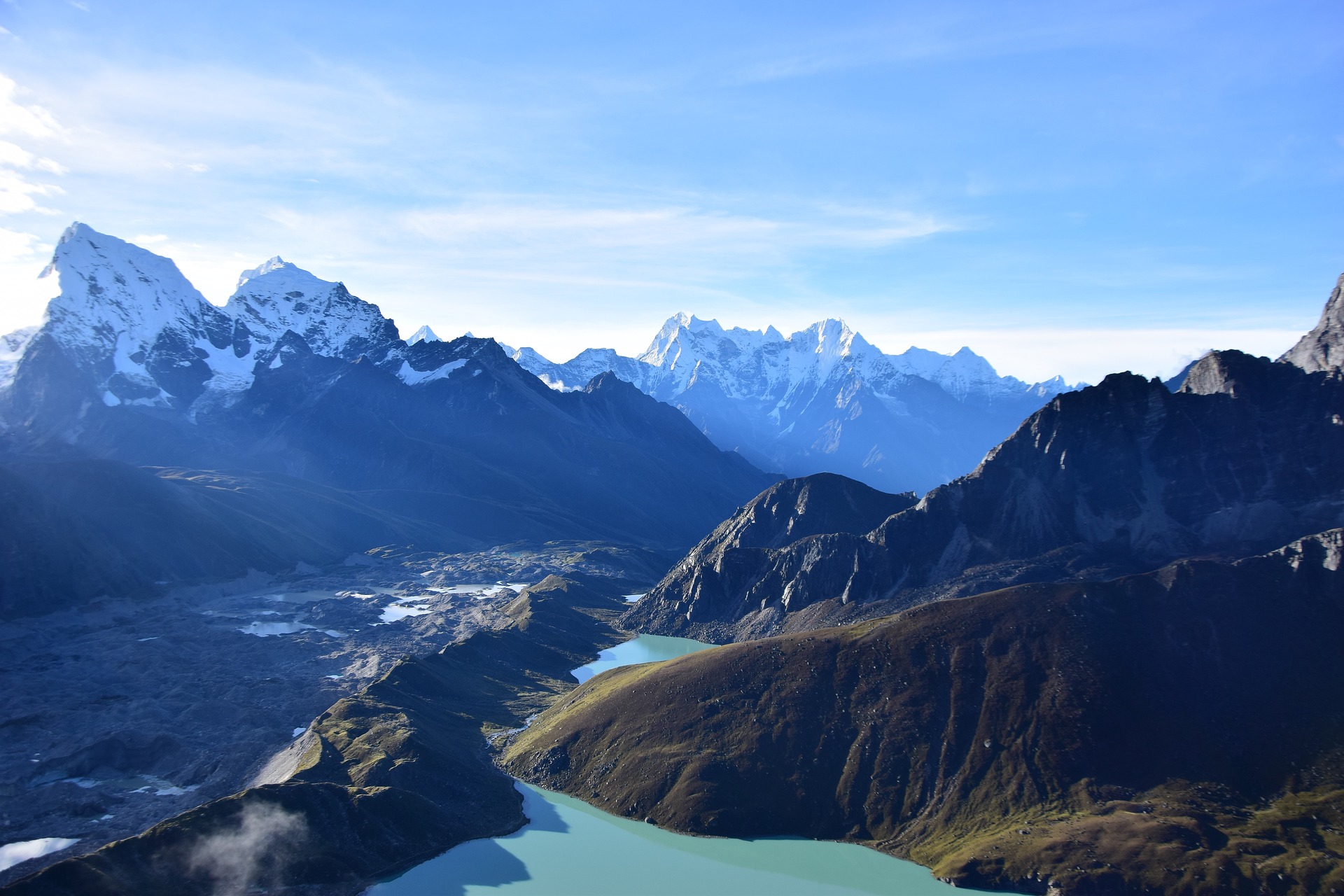
Gokyo-Ri glacier
Gokyo Lakes
The Gokyo Lakes or Gokyo Ri Trek is a fantastic variation on the Everest Base Trek. The route begins in Lukla and follows the traditional EBC trek itinerary for the first three days up to Namche Bazaar. Here it veers off to the North-west via the towns of Dole and Machemo, up to the stunningly beautiful Gokyo Lakes. The trail then ascends Gokyo Ri (5,483 meters) and traverses Cho La Pass (5,420 meters) before joining back up with the classic base camp trek at Lobuche.
The variation adds 2-3 days to an average Everest Base Camp trek but provides an excellent opportunity to avoid the crowds on the busy everest trail, as well as gives one the opportunity to trek up and down on different routes.
Chhukhung Valley
The Chhukhung Valley sits east of Dingboche and provides an alternative and longer passage to Lobuche than the traditional Everest Base Camp trail. Trekkers stay a night in Chhukhung (4,730 meters) before returning to Lobuche via Kongma La Pass (5,535 meters), an epic Himalayan pass.
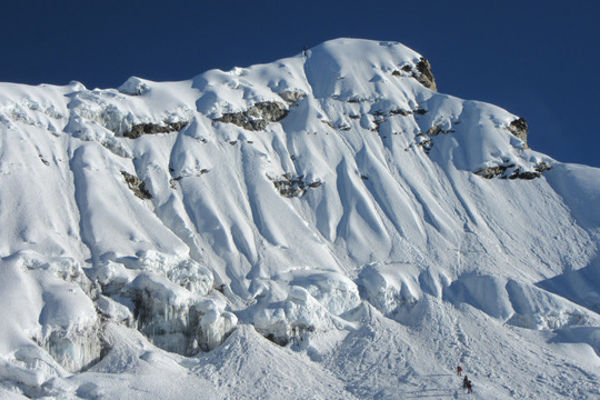
Island Peak headwall
Island Peak
Island Peak is one of Nepal’s 33 trekking peaks. Standing at 6,189 meters, Island Peak is a real challenge in terms of altitude, but only requires beginner level climbing skills (you will need to be comfortable with ice axes and crampons though). Most climbers use the traditional Everest Base Camp trek to acclimatise for Island Peak.
Returning from Everest Base Camp, you can either trek to Cchukhung via Dingboche from Lobuche or veer South-east from Lobuche traversing the Kongma La Pass to Cchukhung (4,730 meters). From here you can trek to Island Peak Base Camp (5,120 meters) in preparation for their trek / climb up to Island Peaks summit. The summit typically takes 2 days and the total trip, including Everest Base Camo, between 18-20 days.
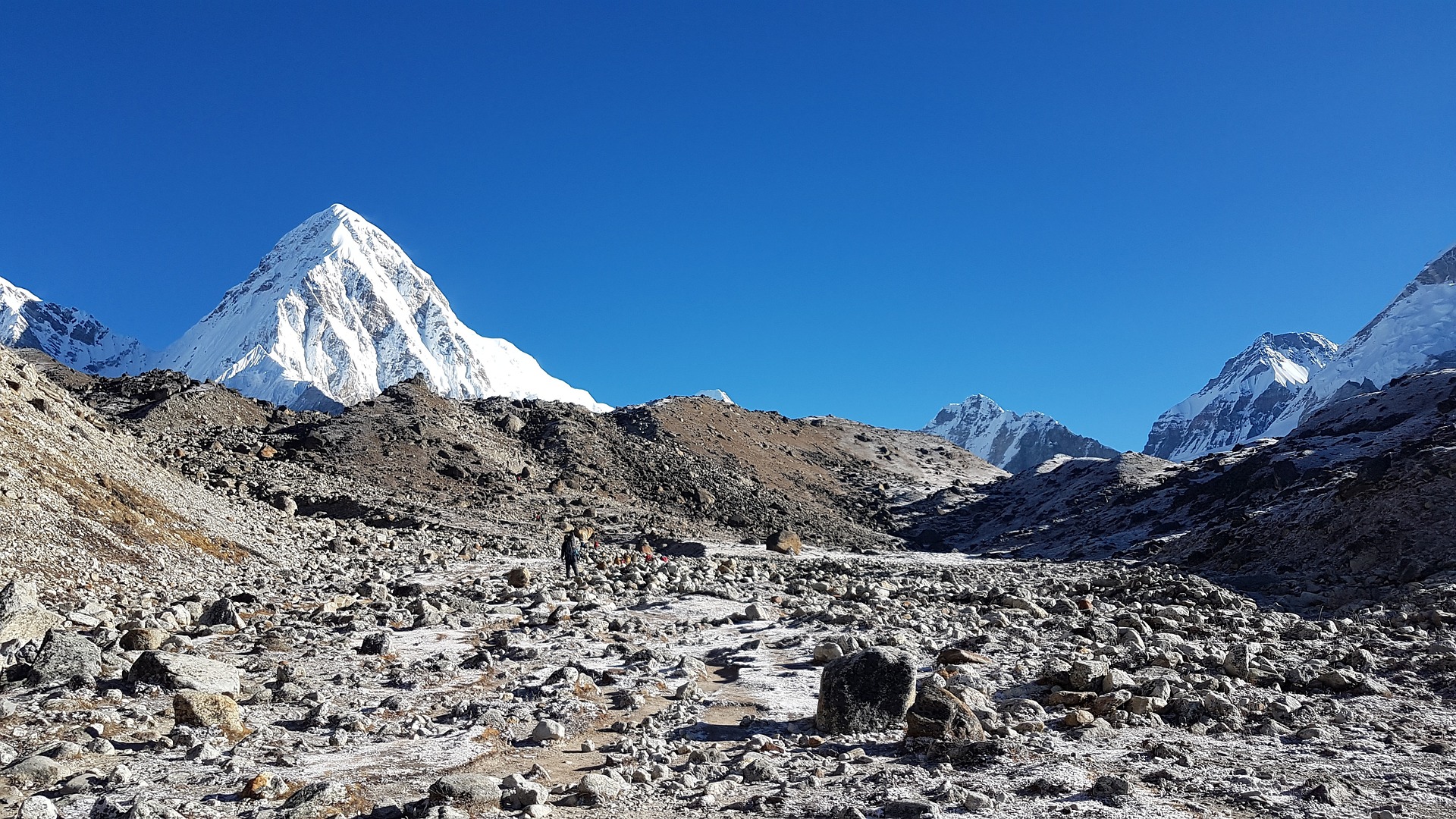
Everest Base Camp Trek FAQ
How much does the EBC trek cost?
Like many treks in Nepal, there are three ways you can plan your Everest Base Camp trek. See more in our guide on a detailed breakdown on the cost of an Everest Base Trek.
Below are four options for Everest Base Camp treks and their estimated costs.
Independent Trekking
Here you organise your trek. You will need to get yourself from Kathmandu to Lukla (a flight is the fastest and easiest; there are buses but these are rather unpleasant). You can employ the services of a porter or guide in Lukla or indeed in Namche, but it is important to note that as an independent trekker, it is illegal to use a guide or porter that is not licensed as a trekking agent through TAAN, or affiliated with a licensed trekking agent. You will need a Green TIMS card (costing NPR 2,000), money to buy food and water, a reliable and accurate map, and negotiations skills to book teahouse accommodation.
The estimated cost for an independent trek excluding flights is between $500-$800.
Local Tour Operator
There are many local tour operators in Kathmandu who organise guided Everest Base Camp treks. Generally local Nepal trekking companies are quite good. You will join a group of trekkers (up to 15 people) and have a team of porters, assistant guides and lead guides (who can speak English) of a similar size to the trekking group.
It is important to check that your local operator is a licensed trekking agent. We recommend shopping around and asking for recommendations from other trekkers. The cheap local operators tend to be the least reliable, often only providing tent accommodation or access to old and poorly run teahouses. Their ethical standards towards staff and the local environment may not be to the highest standard as well.
The estimated cost for an Everest Base Camp trek organised by a local tour operator is between $800-$2,000.
Western Run / Operated Tours
There are many Western run companies that offer Everest Base Camp treks. Most of these Western companies have their own ground teams or strong relationships with the best local tour operators who they outsource their on-the-ground operation to, whilst managing the overall tour experience.
The best Western companies own their on-the-ground operations. Expect a well-run tour with either a Western guide or a very well-trained local guide who understands the subtle service nuances expected of a Western trekker.
The estimated cost for an Everest Base Camp trek organised by a Western run tour operator is between $1,200-3,000.
Everest Climbing Expedition
A fourth option of joining an Everest climbing expedition is also possible. Major climbing operators like Adventure Consultants, Jagged Globe or Alpine Ascents usually offer Everest Base Camp trekking spaces on their Everest climbing expeditions. Securing a trekking space can be a little pricey but offers one an incredible insight into an Everest expedition as well as the chance to spend a night or two at Everest Base Camp.
If you think a base camp trek is expensive, wait till you hear how much it costs to Climb Mount Everest!

Are permits required for the EBC trek?
Yes, there are two permits you require for standard treks from Lukla to EBC. They are:
1. Trekkers Information Management System (TIMS Card)
TIMS cards are issued by the Tourism Agency Association of Nepal (TAAN). There are three different types:
- Organised TIMS Card (Blue in colour, USD 10). If you are trekking with an organised tour these will be arranged for you. You will need to provide your passport number and one passport photograph
- Individual TIMS Card (Green in colour, USD 20). If you are trekking independently (without support) you will need to get one of these TIMS cards from the Nepal Tourism Board in Kathmandu
- SAARC Country TIMS Card (Red in colour, USD 3). These cards are for nationals from the South Asian Association for Regional Cooperation, i.e. India, Bhutan, Pakistan, Sri Lanka, Maldives, Bangladesh and Afghanistan.
2. Sagarmatha National Park Entry Permit (USD 30 + 13% Govt. Tax)
The Sagarmatha National Park or Solukhumbu is the region through which the EBC trek runs. A National Park entry permit is required to enter Sagarmatha. Permits can be acquired at the first checkpoint along the route, north of Lukla called Monjo. The cost is US$30 + 13% tax for trekkers using a trek operator or agency, as well as for independent trekkers. Permits can also be acquired in Kathmandu, but we recommend getting it in Monjo as it is more straightforward.
For treks from Jiri to Everest Base Camp, there is another permit required called the Gaurishankar Conservation Area Project permit. It costs US$20 (no discount for independent trekkers or SAAEC nationals). The checkpoint is at at Shivalaya (just after Jiri). We recommend getting the permit in Kathmandu before departing as the cost is double if they have to issue the permit in Shivalaya.
As a rule of thumb, we recommend bringing at least 4 passport size photographs for all your permit requirements.
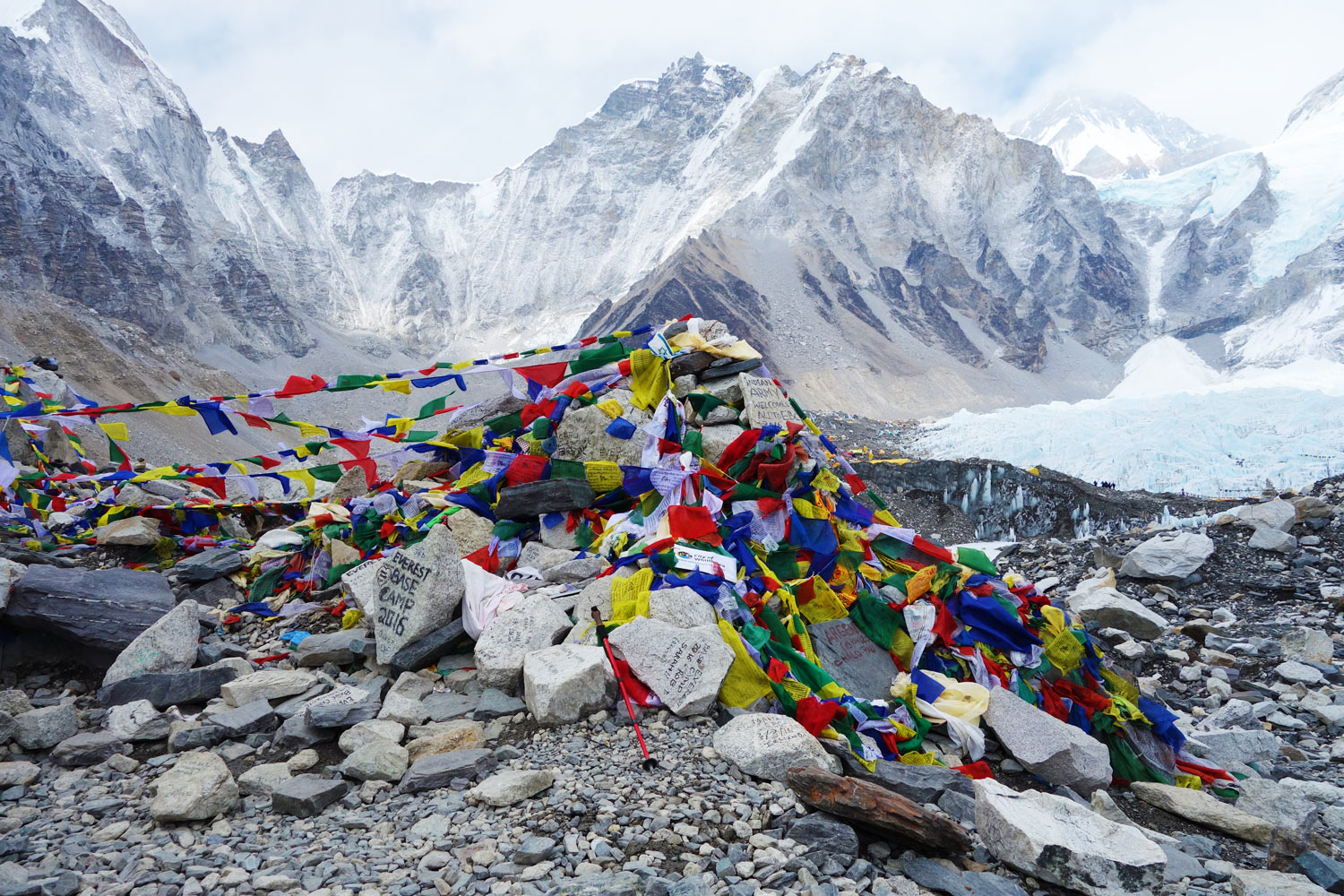
When is the best time to trek to Everest Base Camp?
The best time to trek Everest Base Camp is during the dry and warm months of September through November of March through late May / Early June.
The monsoon rains arrive in mid-late June and get into full swing for the months of July and August (as seen in the average rainfall map below). The route is really too wet for trekking and you would be better placed to explore treks in rain shadow areas like the Upper Manang, Mustang, Annapurna or Dolpo region.
December, January and early February are very cold. Treks run during these periods but be prepared for freezing temperatures and possible snow flurries. The upside is that the route is a lot quieter than in the peak seasons.
The chart shows average temperatures and rainfall in Nepal (data from 1960-1990 compliments of the Climate Change Knowledge Portal at the World Bank).

Is altitude sickness a risk on the Everest Base Camp hike?
Yes, altitude sickness is a risk on the Everest Base Camp route. The trek takes one from a moderately high altitude, 2,800 meters in Lukla, to high altitude, over 5,300 meters at Everest Base Camp and over 5,500 meters at Kala Patthar. At these higher altitudes, the body needs to have acclimatised to the lower saturation of oxygen in the air in order to avoid the symptoms of altitude sickness (or what is sometimes referred to as Acute Mountain Sickness – AMS).
The good news is that a typical Everest Base Camp hike has a slow ascent profile which maximises the amount of time available to acclimatise. Nonetheless, every year 100s of people suffer altitude sickness symptoms and some need to cut their trek short due to more severe complications.
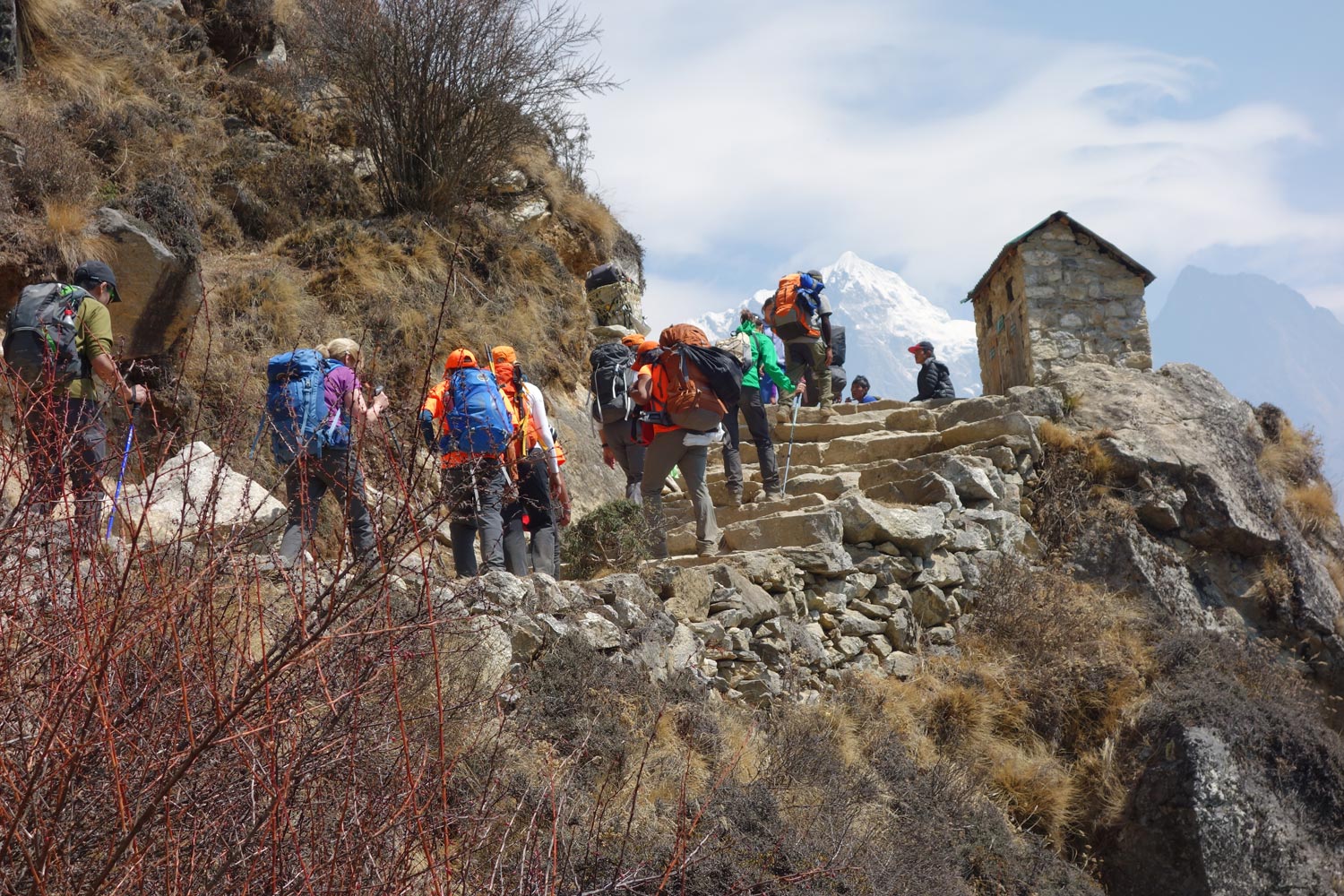
How difficult is the Everest Base Camp Trek?
The difficulty of the Everest Base Camp Trek is relatively low. It should be noted that the Everest Base Camp trek requires no climbing expertise and there are certainly no technical climbing sections. With determination and a basic fitness level, you should be able to trek the route. We have seen old and young, overweight and underweight complete the trek – all with a smile on their face!
With that being said, there are certainly some factors that should be considered prior to your trek, such as altitude, length and training that will enable you to better understand what you are getting yourself into before deciding.
What gear do I need for the EBC Trek?
One of the most frequent questions that we get asked is what gear should be packed for an Everest Base Camp trek.
To make your life a lot easier we have written a very detailed Everest Base Camp packing list article. The list is fairly exhaustive but includes all the absolutely necessary items of clothing and outdoor gear that you should bring with you.
You will have the opportunity to either buy or rent gear in Kathmandu, Lukla or even in Namche Bazaar, but in general we recommend you bring with you the main items (i.e. hiking daypack, hiking boots, warm down jacket, sleeping bag and sleeping mat, trekking poles, appropriate trekking clothes, headgear and headlamp and gloves etc.)
What travel insurance do I need for the EBC hike?
Trekking Everest Base Camp comes with obvious risks. We recommend you get travel and trekking insurance for all treks in Nepal.
On the Everest Base Camp route, you will reach a maximum altitude of 5,416 meters, so it is important you choose an insurance package that covers you up to that altitude.

Are there any recommended guidebooks for the Everest Base Camp Trek?
Absolutely. There are some great guidebooks and trekking maps to choose from when doing the Everest Base Camp Trek.
The classic EBC trail itself is well-worn, but there are many smaller yak trails that can confuse people.
We recommend taking a detailed trekking map. The region is sparse, and it is possible to get lost in the many valleys that lie on either side of the main trail. The most recent Lonely Planet Trekking in the Nepal Himalaya provides the most up to date information and maps of the region.
Sian Pritchard-Jones and Bob Gibbons’s book: A Trekking Guide to Everest is also rather good.
For a more general guide to Nepal, you may want to check out the Nepal Lonely Planet Travel Guide.
Are there any other hikes in Nepal you would recommend?
Yes, there are many other hikes in Nepal that I love.
Some of the most popular alternative Nepal trekking routes are the Annapurna Circuit Trek, the Langtang Valley Trek and the Manaslu Circuit Trek. If you're looking for some easy Nepal hikes, then check out the Poon hill hike or the Royal hike. For short Nepal hiking routes see the Helambu hike, which is near Kathmandu.
Continue browsing
See more information on Nepal. Or check out these other Everest/Nepal articles:
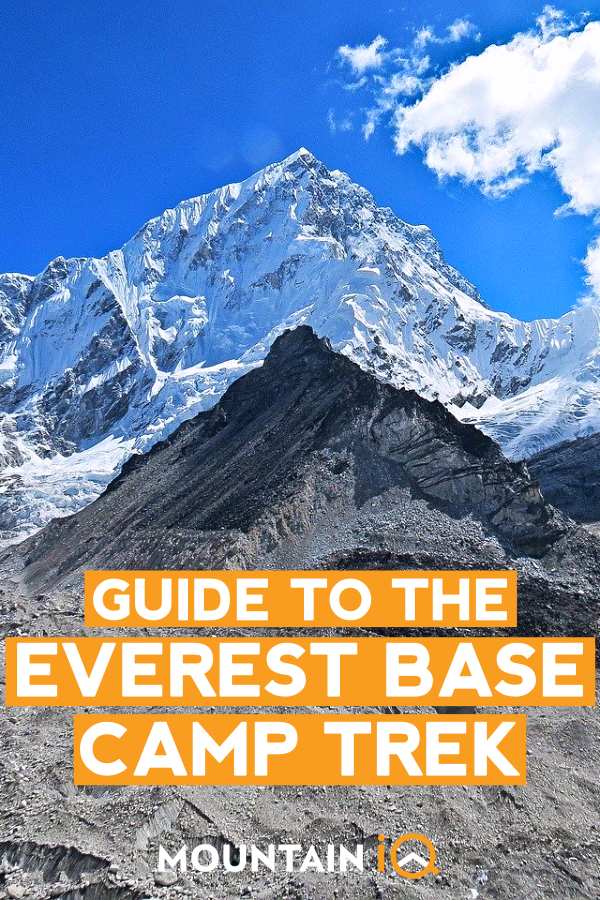

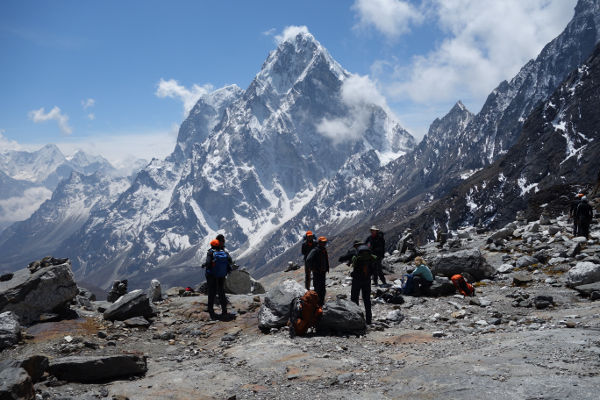
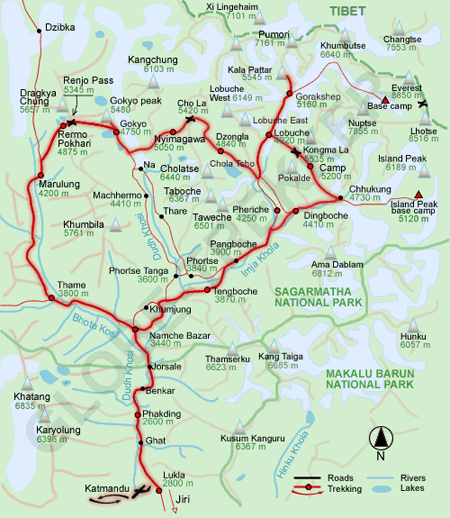
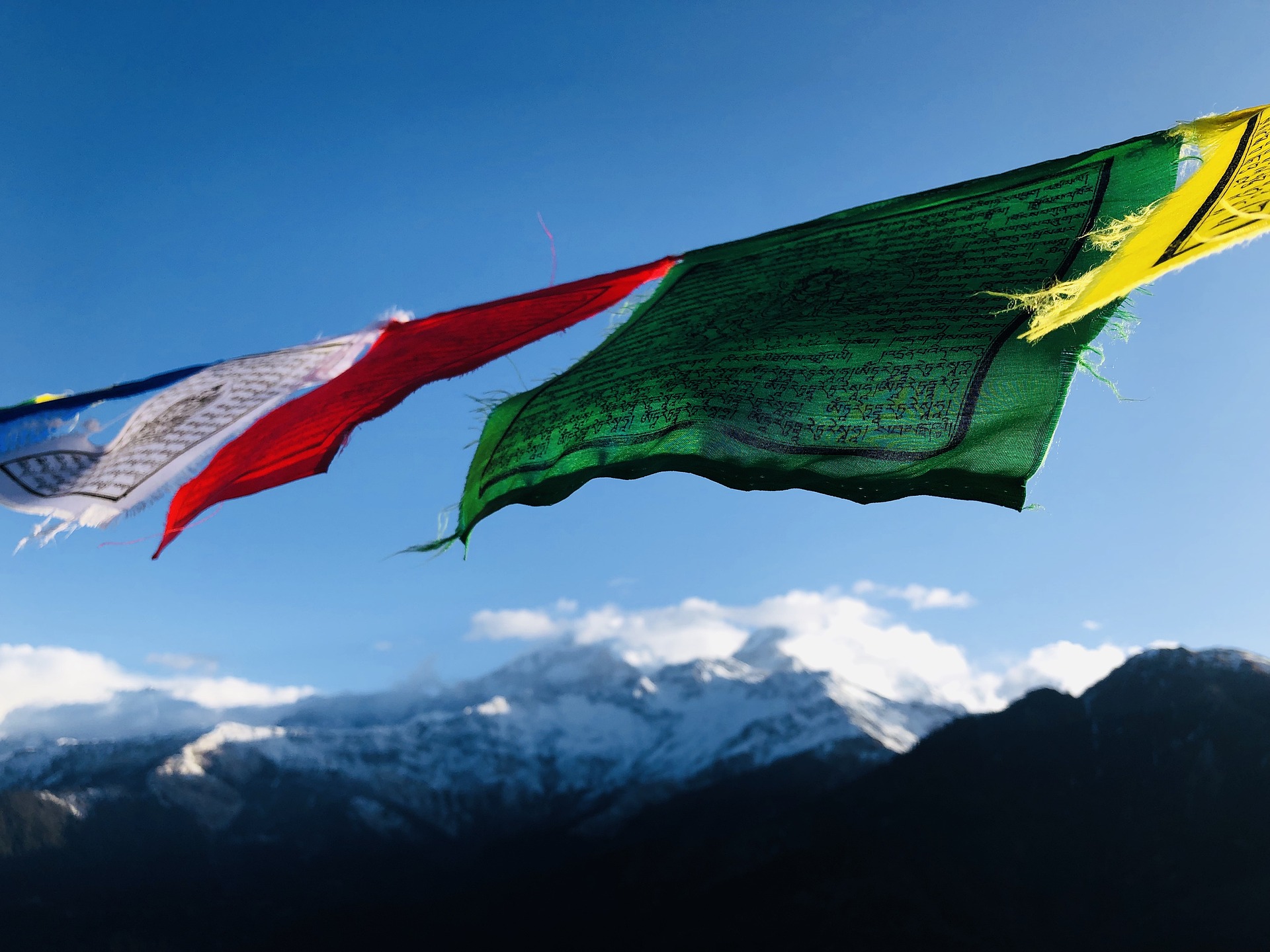
Nice article. Full of true information and very supportive for new trekkers.